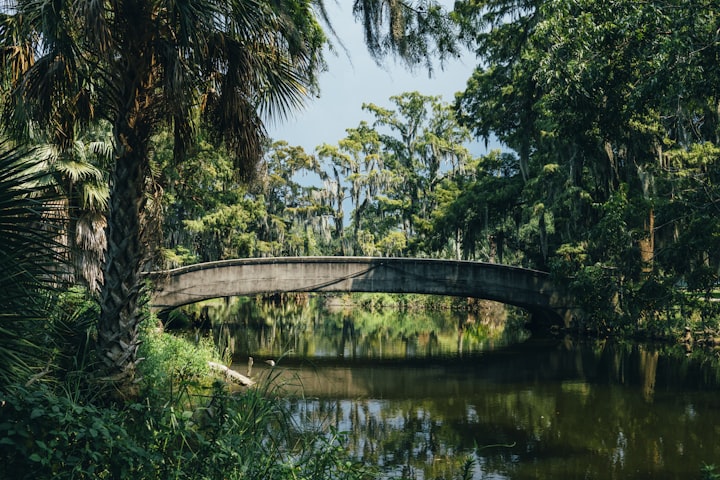53 Interesting Facts About Louisiana
Louisiana is the 25th most populous and the 31st most extensive of the 50 states of the United States. It lies in the southeastern region of the United States. The state attained statehood on April 30, 1812, becoming the 18th state to join the union. It shares its border with three states (Texas, Arkansas, and Mississippi.) See the full list of the 50 states and their borders here. Louisiana (nicknamed: the Sugar State, the Bayou State, the Creole State, the Child of the Mississippi, the Pelican State) has 64 parishes. The state’s capital is Baton Rouge. The abbreviation for Louisiana is LA. With these 53 facts about Louisiana, let us learn more about its history, geography, people, economy and more.

Louisiana facts
1. The influence of early French and Spanish settlers is still present in the culture and food of the state.
2. Louisiana State Capitol Building is the tallest state capital in the United States. The building was inaugurated on May 16, 1931. It is 450 feet tall and has 34 stories. In September of 1935, Long was assassinated in the State Capitol, which was built under his direction.
3. The nickname of the state “the Pelican State” comes from the many pelicans that used to inhabit the state’s gulf coast. (see the table at the end of the article for state symbols and nicknames)
4. Louisiana is among the country’s leading oil and gas producing states.[1]
5. Hurricane Katrina (as a Category 3 storm) devastated some parts of Louisiana in August 2005. The hurricane eroded 73 square miles of the Louisiana coastland. The hurricane caused the death of an estimated 1500 Louisianans. Moreover, the state endured more than $100 billion in damages. Louisiana witnesses hurricane season between June and November each year.
6. The official flag of Louisiana was adopted in 1912, one hundred years after Louisiana became a state.
7. The Mississippi River borders and runs through the state.
8. The state of Louisiana has been governed under 10 different flags since 1541.
9. In 1823, the first natural gas field was discovered in Louisiana. It was found at a depth of 400 feet.[2]
10. Louisiana, because of the fertility of its land, was once one of the richest regions in America. Indigo, sugar, and cotton helped make the statesmen some of the richest Americans.[2]
11. Several popular movies were filmed in Houma, Louisiana, including Fight Club, The Butler, The Apostle, Skeleton Key, and Crazy in Alabama. Houma is also the setting for the comic book series Swamp Thing and Suicide Squad.
12. Between 1682 and 1763 Louisiana was a colony of the kingdom of France.[4]
13. In November 1762, France handed over Louisiana and the Isle of Orleans to Spain.[3]
14. Louisiana was named by René-Robert Cavelier in mid-1600’s to honor King Louis XIV, King of France from 1643 to 1715.[5]
15. President Thomas Jefferson purchased Louisiana from Napoleon Bonaparte in 1803. The purchase encompassed 530,000,000 acres of territory in North America that the U.S. purchased for $15 million. The purchase doubled the size of the United States.[6,7]
16. Did you know that the original Louisiana territory is now divided into 13 states?[6]
17. Louisiana does not have an official language. English, French, Spanish, and Vietnamese are the languages that are spoken in Louisiana.[5]
18. Louisiana is one of the wettest states in the U.S. Hawaii overall is the rainiest state in the US.[8,22]
19. Because of the presence of the Mississippi River in Louisiana, Baton Rouge has become an important inland port.[8]
20. Baton Rouge is the site of an important battle during the American Revolution — the only one that happened outside of the original 13 colonies. US forces forged an alliance with the Spanish forces to take down the British colony here. The decisive victory ended British hold of the Mississippi River.
21. Louisiana leads other U.S. states in the production of crayfish and shrimp.[8]
22. Louisiana also made important contributions in the United States space exploration program. The state facilitated the production of the C-5 boosters used in the Apollo moon-landing program.
23. Louisiana is the only state in the U.S. with political subdivisions termed parishes, which are local governments equivalent to counties. The state has 64 parishes. Note that Jefferson Parish is the largest parish-based on population while Cameron Parish is the largest by land area.[9,15]
24. Alexandria: contrary to popular belief, the city was not named after the famous ancient Egyptian center of scholarship. Rather it takes its name from the daughter of the Pennsylvania businessman Alexander Fulton who organized the first settlement here back in 1785.
25. The Louisiana state license plates had the following nickname and phrases appear on them, beginning with: the “Bayou State”, “World’s Fair Plate” and the “Sportsman’s Paradise Plate.”[9]
26. List of the capitals of Louisiana: New Orleans from 1812-1830; Donaldsville from 1830-1831; New Orleans from 1831-1849; Baton Rouge from 1849-1862; New Orleans from 1862-1882; Baton Rouge since 1882.
27. The geographic center of Louisiana is located in Avoyelles Parish, 3 miles SE of Marksville. The state is about 380 miles long and 130 miles wide.[10]
28. Monroe: the city’s name came from the steam-powered ship called James Monroe which settlers consider is the turning point in the site’s evolution from outpost into an actual town. The ship was itself named after the 5th US president, James Monroe of Virginia.
29. Interestingly, the shape of the state resembles the shape of the capital letter “L” or a boot.
30. Native American tribes such as the Natchez, Bayougoula, and Chitamacha were the first inhabitants of what is now Louisiana.[13]
31. The state is also a major producer of soybeans and corn.[13]
32. Driskill Mountain – 535 feet (163 m) above sea level is the highest point in the state. And New Orleans – 8 feet (2.5 m) below sea level is the lowest point in Louisiana.
33. The territory of Louisiana can be divided into three types of regions: lowlands, terrace, and hills.[1]
34. Lafayette, Louisiana, has the most number of restaurants per capita than any city in the region. The residents are partial to spicy and flavorful dishes. In fact, the city attracts lots of tourists thanks to its Cajun food traditions, musical influences, and wild Mardi Gras celebrations.
35. Did you know that in Louisiana “Fat Tuesday” is a big festival that takes place before Ash Wednesday? New Orleans has the most famous “Fat Tuesday” celebration. The festival is also known as the Mardi Gras festival. It has been held there since 1838.[14]
36. Kenner, Louisiana, was first inhabited by the Tchoupitoulas Indians. Incidentally, a group named The Wild Tchoupitoulas was formed in the early 1970s by mixed heritage individuals primarily to perform in the Mardi Gras and honor the tribe. They wore Indian costumes and even recorded their own album.
37. Elvis Presley often went to the Sherveport store of Southern Maid to get some donuts before going to the Louisiana Hayride Show. In fact, he sang the jingle for the brand in 1954. This is the only commercial endorsement he ever did throughout his whole career.
38. At age 13, Dolly Parton recorded her first ever single “Puppy Love” at the Goldband Records studio in Lake Charles. She wrote it two years prior and shows how well she could create relatable songs even at a young age. Parton went on to reach the Billboard #1 in the country charts 26 times.
39. Louisiana is the birthplace of American Jazz.[16]
40. After Alabama, Mississippi, and Tennessee; Louisiana is the fourth most religious state in the U.S.[17]
41. After New Orleans, Baton Rouge, the capital of Louisiana, is the second largest city in the state.
42. Voodoo is widely practiced in New Orleans. Early proponents included migrants from the Haiti slave revolt of 1791 and freed people of color from West Africa. They merged their religious rituals with local Catholic practices. Voodoo kings and queens were powerful political figures in the city during the 1800s.
43. The unemployment rate in Louisiana in August 2018 was 5% as compared to that of 4.1% of Alabama. In 2017, the GDP per capita for Louisiana was $52,602 as compared to that of Alabama, which was $43,377.[18]
44. According to The Tax Foundation, a conservative, nonpartisan think tank in Washington, D.C., since 2016, Louisiana has carried the title of the state with the highest average sales tax in the U.S. However, this year in July the tax rate was lowered to bring the average down.
45. Louisiana has the fourth highest adult obesity rate in the U.S. and the third highest obesity rate for youth ages 10 to 17. For in-depth information about the state of obesity in Louisiana, refer to this page.
46. The Conrad Rice Mill located in New Iberia, Louisiana, is the oldest independently owned rice mill in the United States still in operation. It was established in 1912. Two of its buildings were listed on the National Register of Historic Places on November 10, 1982.[19]
47. The first documented opera performed was staged at the Théâtre de la Rue St. Pierre in New Orleans, Louisiana on May 22, 1796.[20]
48. The legal system in Louisiana derives from the Civil Code established by the French emperor Napoleon in 1804. Thus the legal system of the state differs from the rest of the 49 states that follow English common law.
49. In 1959, Breaux Bridge, a city in the St. Martin Parish, was designated as the “Crawfish Capital of the World.” This was done to honor the region which was known for its crawfish farming and cooking.
50. The Lake Pontchartrain Causeway, sometimes only the Causeway, is a fixed link composed of two parallel bridges crossing Lake Pontchartrain in southern Louisiana, United States. The longer of the two bridges is 23.83 miles (38.35 km) long. It is the longest continuous bridge over water.
51. Louisiana has the highest alligator population in the U.S. (approximately 2 million) The highest populations of the alligator occur in coastal marshes. The state harvests less than 2% of the wild population annually.
52. The Louisiana black bear was designated the official state mammal of Louisiana in 1992.
53. In 1861, during the Civil War, Louisiana left the Union. It rejoined the United States in 1868.
About the Creator
Sriram Nadarajan
I don't know what to write here.
Writing gives me a freedom that I do not find anywhere else!






Comments
There are no comments for this story
Be the first to respond and start the conversation.